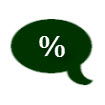 Home builder confidence was unchanged for September according to the National Association of Home Builders/Wells Fargo Housing Market Index HMI released Tuesday. After four months of rising confidence, September’s HMI reading came in at 58, which was not far from expectations of a reading of 59.
Home builder confidence was unchanged for September according to the National Association of Home Builders/Wells Fargo Housing Market Index HMI released Tuesday. After four months of rising confidence, September’s HMI reading came in at 58, which was not far from expectations of a reading of 59.
August’s reading of 58 was revised from 59. Readings over 50 indicate that more builders view housing market conditions as being positive than negative.
Housing Market Index Readings Rise
Components of September’s HMI include readings for home builder views of current market conditions, which maintained August’s reading of 62. The September reading for buyer foot-traffic rose to 47 from 46 in August.
Builder expectations for housing market conditions within the next six months slipped from a reading of 48 in August to 45 for September. Lower expectations for market conditions within the next six months likely take into consideration the coming winter months when weather conditions slow construction and home sales.
Home builder confidence has far outpaced actual home construction on a year-over-year basis; the HMI increased by 45 percent since September 2012. Investors expect a seasonally-adjusted reading of 921,000 housing starts for August on Wednesday. This figure represents a year-over-year increase of 23 percent for housing starts.
Rising mortgage rates affected September’s reading. In addition, David Crowe, chief economist for NAHB also cited consumer credit restrictions, a low inventory of lots available for development and rising labor costs as factors contributing to a plateau in builder confidence.
Fed Decision On Quantitative Easing Tapering Expected
Wednesday’s highly anticipated statement from the Federal Reserve’s Federal Open Market Committee (FOMC) has created a “wait-and-see” mood among home buyers, home builders and investors. The Fed is expected to announce whether or not it will begin tapering its $85 billion monthly purchases of securities.
This program, which is called quantitative easing, was designed to keep long-term interest rates low. Speculation on the Fed’s upcoming decision about reducing its securities purchases has caused mortgage rates to rise since May.
Economists are expecting the Fed to announce moderate tapering of QE to $75 billion in monthly purchases. Reducing or not reducing the fed’s securities purchases has become an elephant in the room to those concerned with mortgage rates; in recent months, the Fed has hinted at its intention to taper QE purchases before year-end.
If the Fed reduces its securities purchases, the demand for securities (bonds) is expected to fall, along with bond prices. When bond prices fall, mortgage rates typically rise. The good news is that once the Fed announces a decision on QE, the guesswork will be done for a while.


















